Iran Press/ Iran news: Tea is probably the most popular beverage in Iran. The tea tradition in Iran has a rich history. Numbers state that Iran is in the World's top 4 tea consuming countries, with a 1.5kg annual per capita consumption.
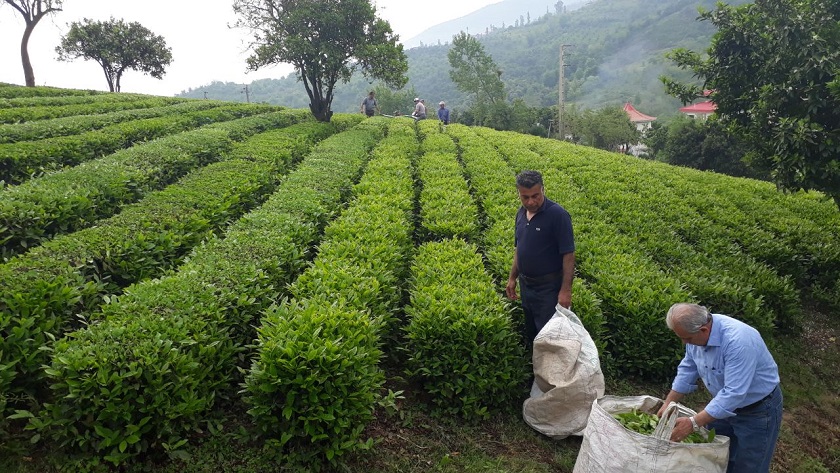 Harvesting tea leaves in Northern Iran
Harvesting tea leaves in Northern Iran
Tea History in Iran
The exact time of tea entering Iran is shrouded in mystery. One of Persia's (and the then-world) greatest scholars and thinkers, Abu Rayhan al-Biruni, mentions tea in his tractate Ketab al-Saydana, written as early as the 11th century. Around the 13th century, tea finds its way into Persia through the Silk Road and the Mongol caravans. In the 17th century, another author mentions tea, again mostly as a medicinal herb.
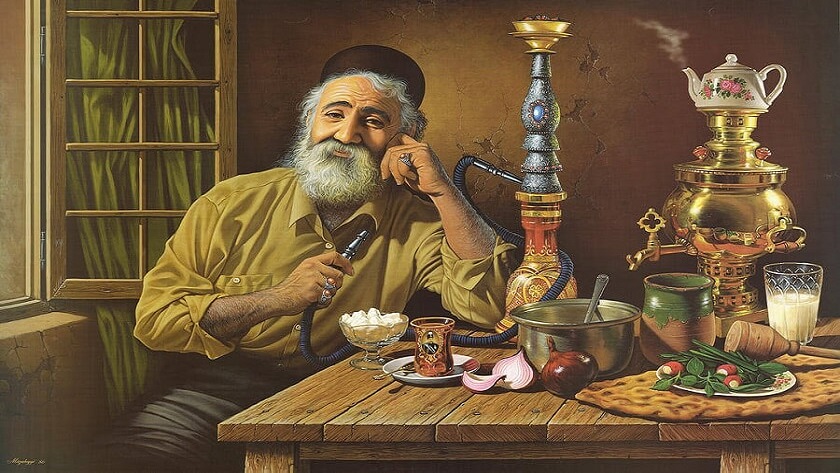 Tea house style painting depitcs Iranian fondness of this drink
Tea house style painting depitcs Iranian fondness of this drink
Two men are credited for the permanent rooting of the tea plant in the culture of Persia. One is called Amir Kabir, a chief minister in the mid-19th century. He received two gift sets with silver samovars – from the French and the Russian government. Seeing its potential, while the habit of drinking tea gradually formed in Iran, Amir Kabir arranged for a government subsidy to a known craftsman in Isfahan while at the same time granting him the exclusive right to produce samovars.
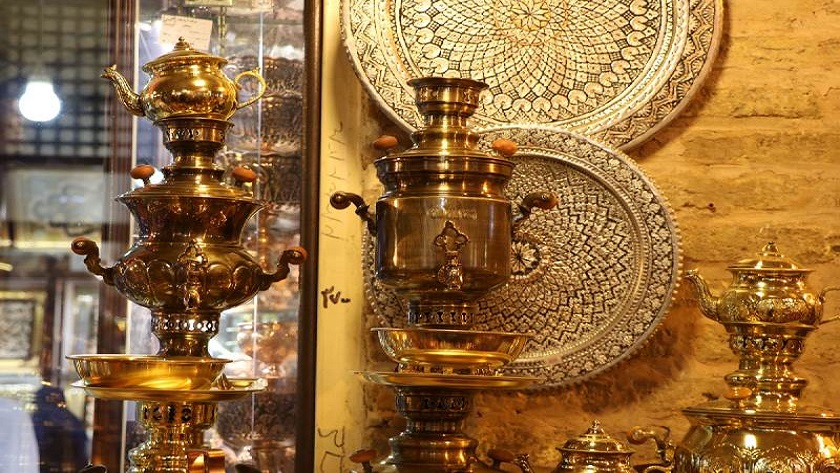 Hands made Samavars in bazaar of Isfahan
Hands made Samavars in bazaar of Isfahan
By then, tea has already become a popular beverage in Iran. It was served in "coffee houses" or "qahva-kana" in major cities, villages, and along the main roads. Persia was importing black tea, mainly from India.
 Amir kabir, Iranian statesman
Amir kabir, Iranian statesman
Kashef al-Saltaneh, an Iranian politician and diplomat. At the end of the 19th century, he served as a Consul general of Iran in British India. While there, he started traveling to tea-producing areas, learning about tea cultivation and processing.
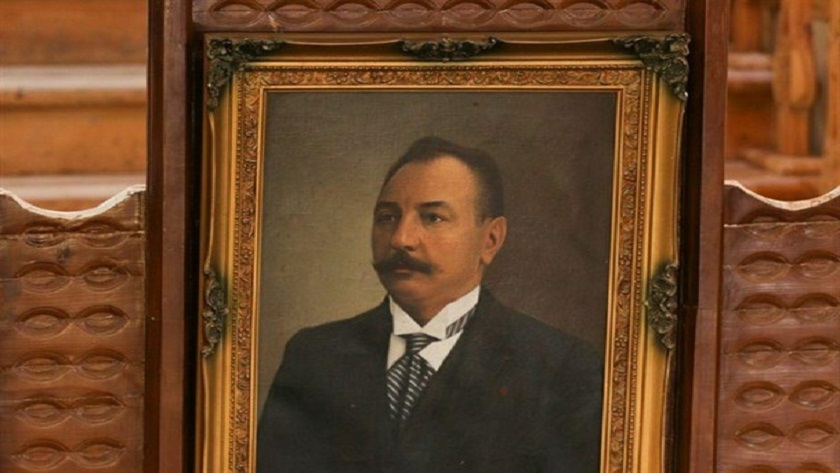 Kashef al-Saltaneh introduced tea plantations in Gilan
Kashef al-Saltaneh introduced tea plantations in Gilan
There's a saying that probably due to their own story of acquiring tea from China, the British had a very strict policy on everything related to tea cultivation. They kept this knowledge strictly confidential and restricted access to it for all non-Europeans. Ironically, Kashef al-Saltaneh disguised himself as a French businessman to obtain intelligence on tea growth.
Related Article: Traditional bread; What Iran is known for
Tea cultivation
Today farmers in Iran cultivate tea exclusively in the Caspian provinces. They feature a combination of mountainous terrain, abundant rainfall, good drainage, and slightly acidic soil. Tea plantations usually reside on steep hills above valleys planted with rice. The picking season starts in early April. Women are mostly engaged in fresh tea leaves' collection. The usual picking standard is a bud and two to three leaves, immediately sent for processing either at home or in the factory.
 Iranian women help harvesting tea leaves
Iranian women help harvesting tea leaves
According to the traditional technique, workers first dry the leaves under the shade. Then, they roll the leaves by hand and cut them into thin strips. The tea then ferments in a cool place until it gets black in color. The final drying is done on a heated metal tray.
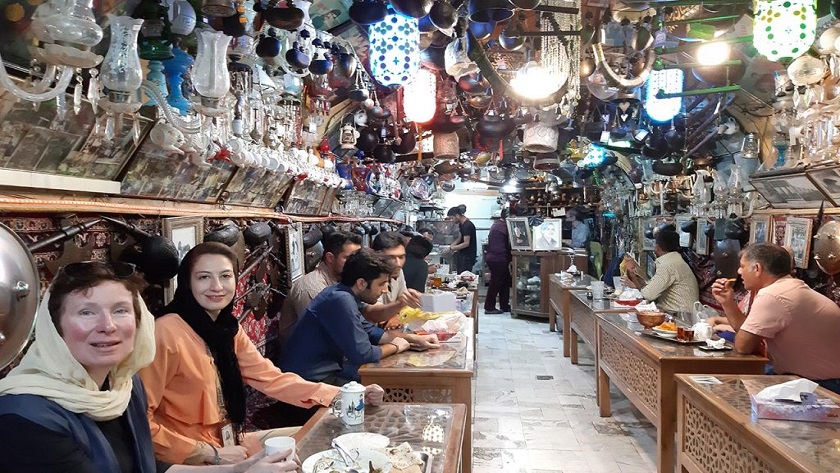 A traditional tea house in Isfahan
A traditional tea house in Isfahan
In Persian culture tea is so widely consumed that it is generally the first thing offered to a guest. Tea is the drink of choice in Iran; it is served for breakfast, lunch and dinner and throughout the day.
Tea Culture
Iranians have a strong preference for black tea. People add bits of dry lemon to the cup before brewing the tea. Another region, Fars, is known for adding fresh lime juice to freshly brewed tea. The Southeastern part of the country, near the border with Pakistan, is probably the only place in Iran where people add milk to their tea. It is common for Iranians to add rose petals or rose buds to their tea leaves before brewing. No wonder, as this is where the rose flower originated in the first place.
 Tea is regularly served at Iranian gatherings
Tea is regularly served at Iranian gatherings
Another favorite addition to the tea leaves in Iran is the bergamot oil – similar to the much-loved Earl Gray, drunk in England. Sometimes they add saffron, which is another common cooking ingredient. Many Iranians love to throw in a cinnamon stick in the tea leaves before brewing. Cloves, cardamom, and coriander seeds round up the list of favorite add-ons to Iranian tea.
Read More:
Traditional bread; What Iran is known for
Persian Cuisine; What Iran is known for
Rice; What Iran is known for
Ashkan Salehian

